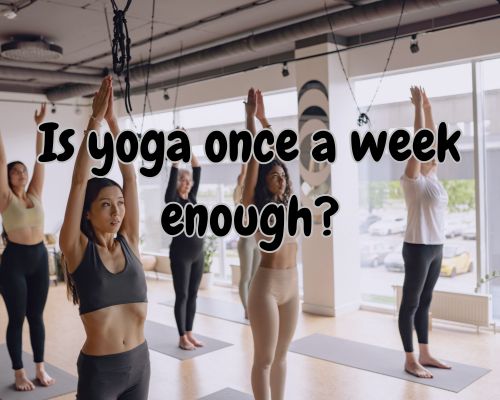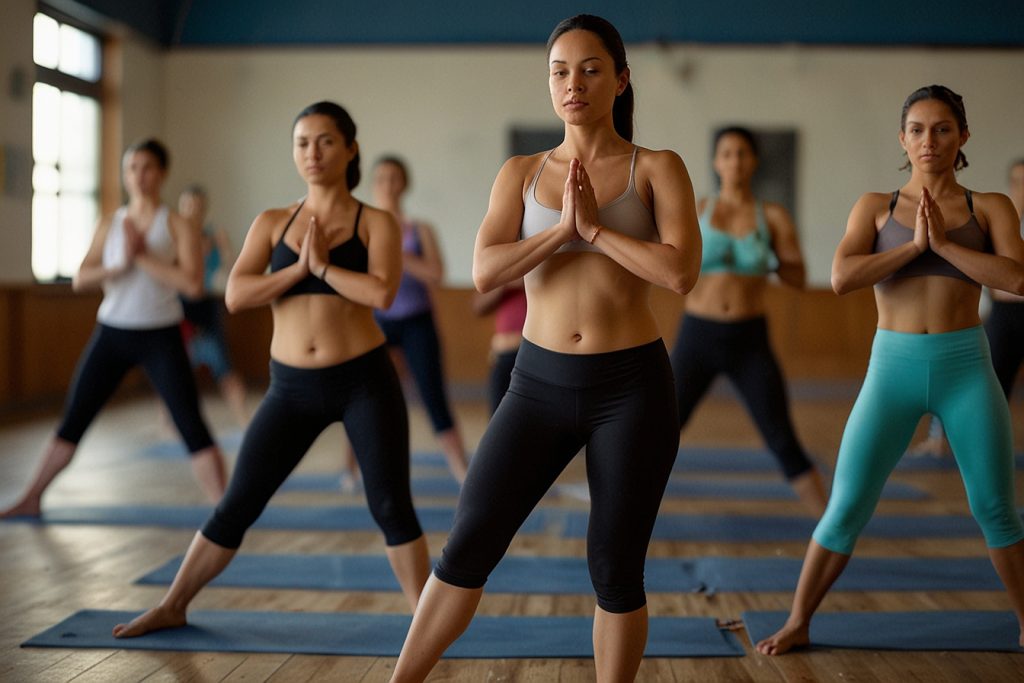Jane Benson of Bikram Yoga Mornington said “If you’re considering practicing yoga, you might be wondering if once a week is enough to reap the benefits. While practicing yoga once a week can bring some benefits, it may not be enough to see significant changes in your physical or mental health. However, any amount of yoga practice can be beneficial.”

Yoga is known for its numerous benefits for both the body and mind. It can improve flexibility, strength, balance, and posture, as well as reduce stress, anxiety, and depression. However, the extent of these benefits can vary depending on how often you practice.
While practicing yoga once a week can help you feel less stressed and more relaxed, it may not be enough to see significant changes in your physical health.
If you’re looking to improve your physical health through yoga, it’s recommended to practice at least two to three times a week. This frequency can help you build strength and flexibility, as well as prevent injury. You can refer to Bikram Yoga Mornington to seek for expert’s advice.
However, if you’re mainly interested in the mental health benefits of yoga, practicing once a week can still be beneficial. It can help you feel more relaxed and centered, and provide a break from the stresses of daily life.
Assessing the Adequacy of Weekly Yoga
If you’re considering practicing yoga once a week, you need to evaluate whether this frequency is enough to achieve the desired results. In this section, we’ll explore the effects of weekly yoga on strength, flexibility, mental well-being, and physical health outcomes.
Effects on Strength and Flexibility
Practicing yoga once a week can help you improve your strength and flexibility. Yoga poses focus on using your body weight to build muscle strength and increase range of motion. Over time, this can lead to improved balance, posture, and overall physical function.
However, if you’re looking to build significant muscle strength or improve flexibility quickly, practicing yoga once a week may not be enough. Consistency is key, and frequent practice is necessary to see significant improvements in strength and flexibility.
Yoga’s Impact on Mental Well-Being
Yoga is well-known for its positive effects on mental well-being. Practicing yoga once a week can help reduce stress, anxiety, and improve mood and energy levels. Yoga’s meditation practice can also help improve focus and concentration, leading to an overall sense of calm and mental clarity.

However, if you’re looking to manage mental health conditions such as depression or anxiety, practicing yoga once a week may not be enough. A more frequent yoga practice may be necessary to see significant improvements in mental health outcomes.
Physical Health Outcomes
Practicing yoga once a week can have positive physical health outcomes, such as improved cardiovascular health, weight loss, and a stronger immune system. Yoga’s combination of exercise and meditation can help reduce stress levels, leading to improved physical health outcomes.
However, if you’re looking to achieve significant physical health outcomes, practicing yoga once a week may not be enough. A more frequent yoga practice combined with a healthy lifestyle may be necessary to see significant improvements in physical health outcomes.
Maximising the Benefits of Infrequent Practice
If you can only practice yoga once a week, it is important to make the most of your time on the mat. Here are some tips to help you maximise the benefits of infrequent practice:
Choosing the Right Style and Poses
When you only have time for one yoga class a week, you need to choose a style and poses that will give you the most benefit. Styles such as Yin or Restorative yoga can be a great choice, as they focus on holding poses for longer periods of time, which can help increase flexibility and relieve stress.
However, if you are looking for a more active practice, styles such as Vinyasa, Hatha or Ashtanga may be more suitable for you.
When selecting poses, focus on ones that can help improve your posture and joint mobility. Some great poses to consider include Downward Dog, Triangle, Warrior II and Child’s Pose.
Incorporating Yoga into a Busy Lifestyle
If you have a busy schedule, it can be challenging to find time for yoga. However, there are ways you can incorporate yoga into your daily routine.

Consider practicing yoga at home using a yoga video, or taking a few minutes each day to practice breathing exercises or simple poses. Additionally, try to make conscious choices throughout your day, such as standing up straight or taking the stairs, to help improve your posture and joint mobility.
Supplementary Activities and Habits
To get the most benefit from your once-a-week yoga practice, consider incorporating other activities and habits into your life that can help support your practice.
For example, make sure you are getting enough sleep, eating a healthy diet and staying hydrated.
Additionally, consider incorporating other forms of exercise, such as walking or swimming, to help improve your overall health and fitness.
Practicing yoga once a week may not be enough to achieve all of the benefits of a regular yoga regimen, but it is still a great way to improve your physical and mental health.

By choosing the right style and poses, incorporating yoga into your busy lifestyle, and adopting supplementary activities and habits, you can maximize the benefits of your infrequent practice.



